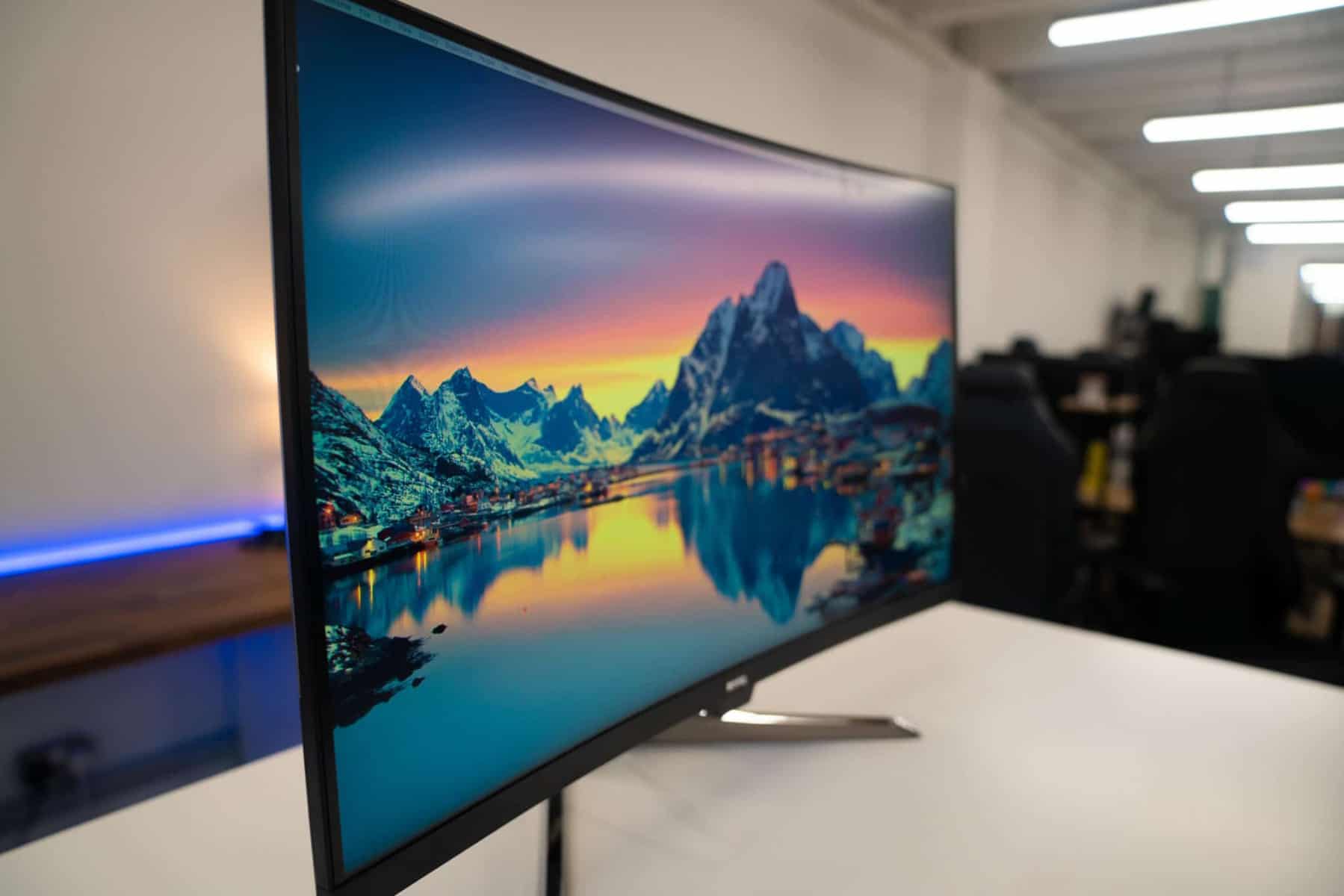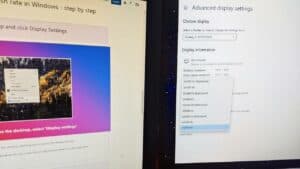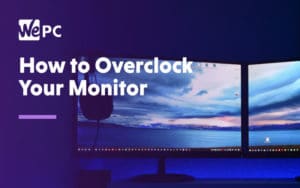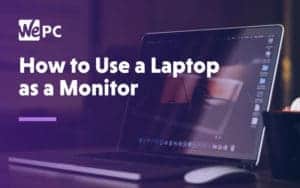How To Test Your Monitor For Backlight Bleed – Backlight Bleed Test
Want to figure out if your monitor has Backlight Bleed?

WePC is reader-supported. When you buy through links on our site, we may earn an affiliate commission. Prices subject to change. Learn more
The last thing you want to see as you turn on your brand new LCD monitor is backlight bleed. This dreaded screen defect can affect the quality of gaming, entertainment viewing, color accuracy, and the general picture clarity of your monitor.
Thankfully, if you’re unlucky enough to purchase a monitor that is experiencing particularly bad backlight bleed, you should be able to send the panel back and receive a full refund – as long as you have the relevant warranty/returns policy in place.
That said, and for those that aren’t sure what backlight bleed looks like, this guide will be your one-stop-shop to monitor backlight bleed. The following article will discuss; how you can check for backlight bleed, the main differences between backlight bleed and IPS glow, and will conclude with how to test and prevent your monitor from backlight bleed.
What Is Backlight Bleed?
Backlight bleed is a screen defect found in all LCD (and LED) monitors. To better understand how backlight bleed occurs, we must first understand how an LCD panel is designed.
LCD panels are made from numerous layers, one of which is a backlight. Because LCDs don’t produce light by themselves, they require a backlight to produce the light needed to create the images you see. Without it, the monitor would be useless.
However, the backlight is where all of your light bleed comes from. As some LCD monitors aren’t overly adept at blocking the pentration of light, the LCD’s backlight can creep through around the edges. This bleeding of light can wash out images, reduce the color accuracy of your picture, and diminish the experience you are receiving.
Ultimately, backlight bleed is a limitation of the LCD’s design. If you are purchasing an LCD monitor, you will most likely have to endure some backlight bleed of your own. Just hope that the light bleed is subtle and you barely notice it.
Related monitor backlight pages:
- Best mini LED monitors
- Best OLED monitors
- Mini LED monitor list
- IPS technology
- TN technology
- TN vs IPS vs VA
Backlight Bleed Vs IPS Glow
That being said, there are many cases when certain individuals confuse IPS glow for backlight bleed. However, these are two very different screen defects.
IPS glow is unique to IPS (in-plane switch) panels. It occurs only around the corners of the monitor and shows as a slight orange glow – changing in intensity when you look at the panel from different angles. It differs from backlight bleed in a few fundamental ways:
Firstly, backlight bleed doesn’t change its intensity when you look at it from different angles. Backlight bleed is constant in terms of intensity – at all times. Secondly, backlight bleed can occur around the entire edge of the monitor, not just in the corners. Because backlight bleed is a factor created from the backlight itself, it isn’t bespoke to the corners of the panel – unlike IPS glow.
Unfortunately, and like backlight bleed, IPS glow can never be fully prevented – it’s part of the monitor’s design. That being said, it does vary quite dramatically when comparing budget monitors to higher-end offerings.
How To Test For Backlight Bleed
If you’re concerned about your monitor having backlight bleed, you’ll be happy to hear there are a number of easy ways to tell if your monitor has this annoying screen defect. Ultimately, you just need to complete a few short steps.
Step
Find a black image
First off, find a black image that fills your display.
If you’re struggling to find a black image, just use one of the many YouTube videos available and play it in fullscreen mode.
Step
Adjust the brightness of your monitor
Turn the brightness of your monitor to between 30-60% and see if you can see any lighter areas coming through the black image.
Step
Analyze the results
If you see too much light bleed when you’re viewing the black image, your monitor has a high chance of being classified as defective – meaning you’ll be able to receive a full refund.
However, if the light bleed is only subtle, chances are you probably won’t notice it at all when playing games or watching movies.
How To Prevent Backlight Bleed
As we mentioned above, backlight bleed is present in all LCD monitors – preventing it isn’t really a possibility. That said, there are good practices you can always incorporate into the use of a monitor which will lessen the effects of backlight bleed.
- Try and keep your brightness at around 30%. It will slow the degradation of your monitor down and lessen the intensity of light bleed.
- Try not to leave your monitor on all the time. Switching it off in an evening can reduce the degradation of the monitor.
- Try not to put too much physical strain on your monitor. Banging, knocking, and hitting the monitor can result in backlight bleed becoming more prominent.
Conclusion
Ultimately, whilst backlight bleed is annoying, it’s not the most pressing issue you’ll ever experience when using a monitor. Most of the time, the retailer you purchased the monitor from will change the monitor for a new one or issue you a full refund. Backlight bleed is not a new concept, so telling the retailer about this issue should warrant some level of acknowledgment.
Despite there being no physical fix for backlight bleed, you can start to practice good monitor care in your everyday routine. Not only will this reduce the chance of experiencing screen defects such as this, but it’ll also ensure your monitor is running at optimal levels.
If you have any questions regarding backlight bleed, feel free to drop us a comment in the section below and we’ll get back to you as soon as we can. Better still, why not head on over to our Community Hub where you can discuss everything monitor related with likeminded individuals.





